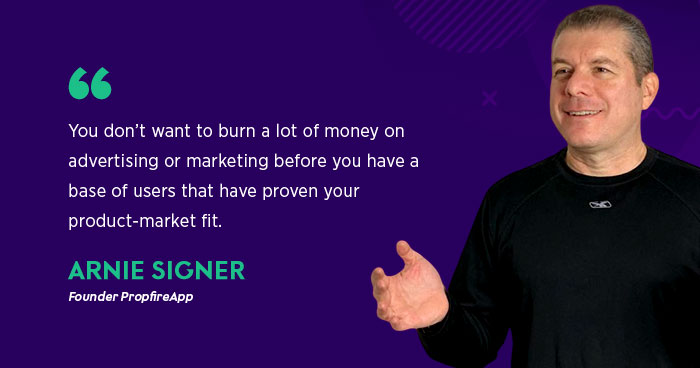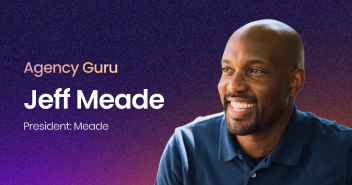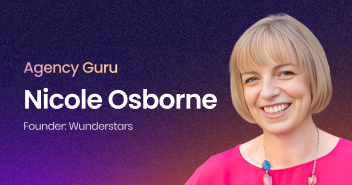
Entrepreneurship is a continuous journey. Its sphere encompasses not only business but expands way beyond to transforming societies altogether. Entrepreneurs are the change agents who take pride in helping businesses and people rise to their potential, grow, and achieve success, by investing in their ideas.
Arnie Singer is one such entrepreneur who has transformed the proposal writing process for good, thanks to his application, Propfire. We are fortunate enough to have him today for an interview session for Cloudways.
Arnie Singer is a digital marketing consultant who offers various services like web design, content marketing, SEO. He has changed the game for many digital agencies and freelancers across the globe. He identified that manual proposal writing is a major hassle for many. Henceforth, he came up with an application namely “Propfire” that produces desired proposals within no time.
To know more about his journey, you must read the interview in full.
Cloudways: Please tell our readers about yourself. How did it all begin? Who motivated and inspired you to be who you are today?
Arnie: I’ve always wanted to be an entrepreneur, to be able to see the entire “big” picture of a project, instead of just being one aspect assigned to me by a boss. I also hate working for other people!
I’ve always been inspired by people who start companies, whatever industry they’re in. But I’m particularly impressed by founders in the tech industry, who build companies from nothing more than code, content and of course, an awesome idea. It’s like creating real estate that keeps rising in value. On the internet, you can create a real estate, and that excites me.
Regarding my internet journey, for the last seven years, I’ve been building WordPress websites and providing SEO and content marketing services for companies. During 1999 – 2000 I learned how to write code in HTML from a book, and then rode the dotcom wave to get jobs at a couple of internet companies (which are long gone) where I had the opportunity to perfect my HTML skills and learn ASP (not the same as ASP.net), and some SQL (on the job). For those of you, who don’t remember ASP, it’s very similar to PHP.
As far as coding concerned, I’m good at HTML, OK at CSS, I can hack my way through PHP and SQL, and am somewhat familiar with JavaScript. My real superpowers relate to non-coding areas like information architecture, content creation, SEO and marketing.
Cloudways: You founded a SaaS company ‘Propfire’. How did you get this idea? What problems does it solve? How did the whole idea of entrepreneurship begin?
Arnie: As a digital marketing consultant and a small agency owner, I have to write a lot of proposals. Since, I provide a variety of services including web design and development, SEO, content marketing, social media, and PPC, etc. my proposals are often different depending on the project.
When I had to write my first proposal I did what most people in my shoes would do. I turned to Google and started looking for examples of proposals that I could use. After rigorous learning, copying and innovating, I put together a proposal in a Google doc. I thought it was good. Then, each time I had to create a new proposal I would duplicate that one and make changes.
Over time I continuously improved that original proposal until I got it to a level I was (and am) happy with it. The problem was that I had loads of proposals of all types and quality levels cluttering my Google Drive folder. Hence, when I needed to write a new one, I had to make sure, I was using the latest and best version. And of course, I had to, then go into the document and make changes.
If the project was the same as the previous one, I’d only have to change the proposal title, client name, date and possibly the pricing. But in most cases, even the projects that were similar to previous ones still had differences either in deliverables or terms that I’d need to modify and update.
In a best-case scenario, creating a new proposal that needed minor updates could take an hour or two, from start to finish. Proposals that required a complete overhaul could take up an entire day or two to get right and ready to send. With all the distractions and other projects, it sometimes took me a week to create a proposal.
Once the proposal is done, I would usually save it as a PDF and email it to the client.
I also would create a quick WordPress page with the proposal to share with the client, which would also take some quality time. Beyond the actual time it took to do all this, it was the interruption of my normal workflow that made the proposal process unbearable. More importantly, I wanted to get my proposal to the client as quickly as possible, while their attention was still focused on this particular project. “Strike while the iron is hot”. Every delay made it more likely that they would “cool” off and potentially move on to something else.
There had to be a better way.
What finally convinced me that I had found a real pain point that needed to be solved was when I saw a friend of mine, who’s been a digital consultant for around 20 years, struggling for days trying to create a proposal for a potential client. She had a lot of trouble knowing what information to include and how to format it all professionally and all the free templates she found online didn’t help much.
I finally gave her one of my proposals and helped her modify it to meet her needs. But I knew there and then that if she found the proposal creation process challenging, a lot of other people might also have to face these challenges.
Cloudways: What was your first step in building Propfire? How do you create a product roadmap?
Arnie: My first step was figuring out the UI (user interface) and UX (user experience) of the application. I wanted to facilitate a user to build a proposal in a quick time and was more intuitive than the way all the competitors do it (via design templates).
I began by drawing the individual screens of my app on sheets of paper (one screen per sheet) and put them in order. Then I went through each screen as a user (over and over again) to determine the most user-friendly and intuitive experience.
I’ll admit that my knowledge of basic database table structures helped me get through this phase because as I was moving through the screens, I was also mapping out how the information being entered would be efficiently stored and accessed.
I also made a list of all the features that I felt the app would need. I spent a lot of time looking at existing proposal software and took note of the features I thought were important, and put some of the other features that I felt wasn’t vital for an MVP on a product roadmap for future development if the demand for them will exist.
Cloudways: What language did you choose to develop in, and why? Did you use any frameworks which help you develop faster?
Since I was familiar with PHP, thanks to my experience with ASP (almost 20 years ago), so I chose PHP!
It’s probably the most popular scripting language to build data-driven web apps because it’s relatively easy to learn and apply, and there’s a comprehensive set of documentation and coding examples available online. I chose MySQL for the database since it tends to go hand in hand with PHP.
The reason I decided not to use any PHP frameworks (like Laravel) was that I didn’t want to invest the time in learning a framework on top of the basic PHP. I wanted to create my MVP as quickly as possible, so I went with Vanilla PHP.
Cloudways: Did you end up hiring a developer for any part of Propfire? Do you have any tips for working with developers?
I got help from a freelance developer based in South America to integrate a SaaS subscription management tool and for a few other small tasks that I probably could have figured out how to do on my own, but the time I would have spent doing that was just not worth it, when weighed against the relatively low price charged by the developer.
The most important thing about working with a freelance offshore developer is to find someone you can trust. The only way you can do that is to give the developer small tasks at first, to see how he works and whether he is dependable and delivers quality work on time.
An offshore developer will be much cheaper than a US-based one. In some cases, the cheaper price might reflect less experience or lower skill level. There are many experienced developers, especially PHP developers, who will do an awesome job for a fraction of the cost of a US developer because of the lower cost of living in their country (and because they want the work). The trick is finding them, and that is often a process of trial and error or just pure luck.
When you’re sending your developer a task, you must include specific instructions — the more detailed the better. Some developers will be able to figure things out on their own or read your mind. Most will not. The best way to avoid misunderstandings and screw-ups is to communicate clearly, preferably in writing.
A good developer will tell you if the given task or plan makes sense or works according to your desired expectations. But when you’re dealing with someone, for whom English is a second (or third) language, you have to anticipate the possibility of communication difficulties and therefore be extra careful in creating clear and detailed specifications and instructions.
Also, you can’t expect to get an immediate answer from a freelancer living in a different time zone. That’s why it’s best to be familiar enough with your code to troubleshoot in case of an emergency.
Cloudways: What are some of the tools you used to ease the development process? Which the most important phase of development and how did you get past it?
Arnie: Before writing any code, you need some prerequisites to get started.
Code Editor
All you need is a basic text editor like TextEdit (Mac) or Notepad++ (Windows). There are many available for either Mac or Windows. I chose Visual Studio Code by Microsoft — the Mac version (since I use a Macbook Air) — because it’s free and I liked the feel of it. You can also try Atom, which has great reviews. None of these editors will write the code for you, although they’ll let you know when you’ve made an error and sometimes save your typing effort by providing code snippets that you can use. Don’t spend a month trying to figure out which code editor to use. Just pick one and grow to love it.
Local Server
To view the results of your HTML, CSS and Javascript code, all you need is your browser. To view PHP (which is a server-side scripting language) you need a server. Setting up my local server on my Macbook scared the hell out of me. It almost discouraged me from continuing. Luckily, I found this article which had very clear, step-by-step instructions on how to get the job done.
I also decided to host my application on Cloudways, which is the most cost-effective solution with incredible features. I especially like the ability to create and manage a staging environment. I’m also looking forward to scaling up my server capacity as my traffic grows.
It’s time to scale your online business by 10X with managed cloud hosting.
Local Database
Since my app is data-driven. I also needed to set up a local database. The most popular choice is MySQL, which you can download for free. The same article that showed me how to set up my local server also covered the MySQL installation and the installation of Sequel Pro, which is a tool to manage MySQL with a visual interface.I use Servicebot.io, a tool that works with Stripe, to manage my subscriptions and tooltips.io to create tooltips, slideouts, and popups.
Cloudways: What are your goals with Propfire? Are there more features in development?
Arnie: My goal is to make Propfire the go-to proposal creation tool for consultants, freelancers, and digital agencies.
At the moment, I’m gathering feedback from my initial users to see what features they might find useful. I think the tool works well now, but there’s always room for improvement. I’d like to work on creating more content that users can import to use in their proposals.
Cloudways: How did you get your first 100 customers? What strategies do you recommend to other SaaS founders to adopt to get to the first 100 customers?
Arnie: My first customers came through a couple of articles that got some hype on social channels. I plan to eventually do ads and cold email campaigns, but as Paul Graham famously teaches, I’m currently doing things that don’t scale — which is what I would recommend other new founders do.
You don’t want to burn a lot of money on advertising or marketing before you have a base of users that have proven your product as market-fit. And that can take time, but it’s well worth it because once you have it, you can feel comfortable investing to fuel the fire.
I’m also working on creating an affiliate program that I can offer to influencers who like Propfire and would welcome some appreciation to share it with their followers.
Cloudways: You have a detailed product demo on your website. How product demos help in converting a visitor into a lead?
Arnie: I think it’s important to show the potential users about what they’ll be getting if they use your product. I don’t want to have a lot of people signing up just to churn if they realize the product isn’t for them. But if they watch the demo first, there’s a good chance that they’ll end up using the product, because they get to know about the upfront, what they’re getting into.
Cloudways: What’s the general feedback you receive about Propfire? Which tool do you use to take the feedback and how much does NPS matter to you?
Arnie: The feedback has been positive, but I’ve also got some good suggestions for improvements, which I’ve immediately implemented. We use email and one-on-one interaction with the users to get feedback. I feel like that works best for me at this point.
Cloudways: How you would change the entire development process and resources if you get funding rather than bootstrapping it yourself?
Arnie: If I was funded I would have hired a good developer and designer to build Propfire — no question about it! As much as I have enjoyed the challenge of learning how to code my way through the development process, I would have rather skipped the challenge and focus on the things that I’m already good at. I would have also spent a good chunk of money on ads — which is something I’m probably not going to do, at least initially.
Cloudways: Is providing customer support a critical part of your SaaS business? How do you manage traffic these days?
Arnie: Customer support is critical. I’ve built out a support center with comprehensive docs and screencasts to try and avoid common questions by giving users the information to solve their questions on their own. But I welcome users to email me with questions, comments, and suggestions, and I’m also available via live chat. At this point, I haven’t seen a huge number of support requests, which I hope is a sign that I’ve created an intuitive and effective app.
Cloudways: We know that you write, but do you also read often? What books do you recommend to the founders?
Arnie: Yes, I love reading! There are so many great books and online resources out there to learn just about anything. Here are a few that stand out for me:
- Lost and Founder, by Rand Fishkin
- Influence, by Ray Caldini
- Obviously Awesome, by April Dunford
Beyond books, I think there is a wealth of information on blogs like Search Engine Journal, Indie Hackers just to name a few, and then of course podcasts like Startups for the Rest of Us — which is my favorite.
Found Arnie Singer interesting? Get to know about his future endeavors on LinkedIn.
Arsalan Sajid
Arsalan, a Digital Marketer by profession, works as a Startups and Digital Agencies Community Manager at Cloudways. He loves all things entrepreneurial and wakes up every day with the desire to enable the dreams of aspiring entrepreneurs through his work!


